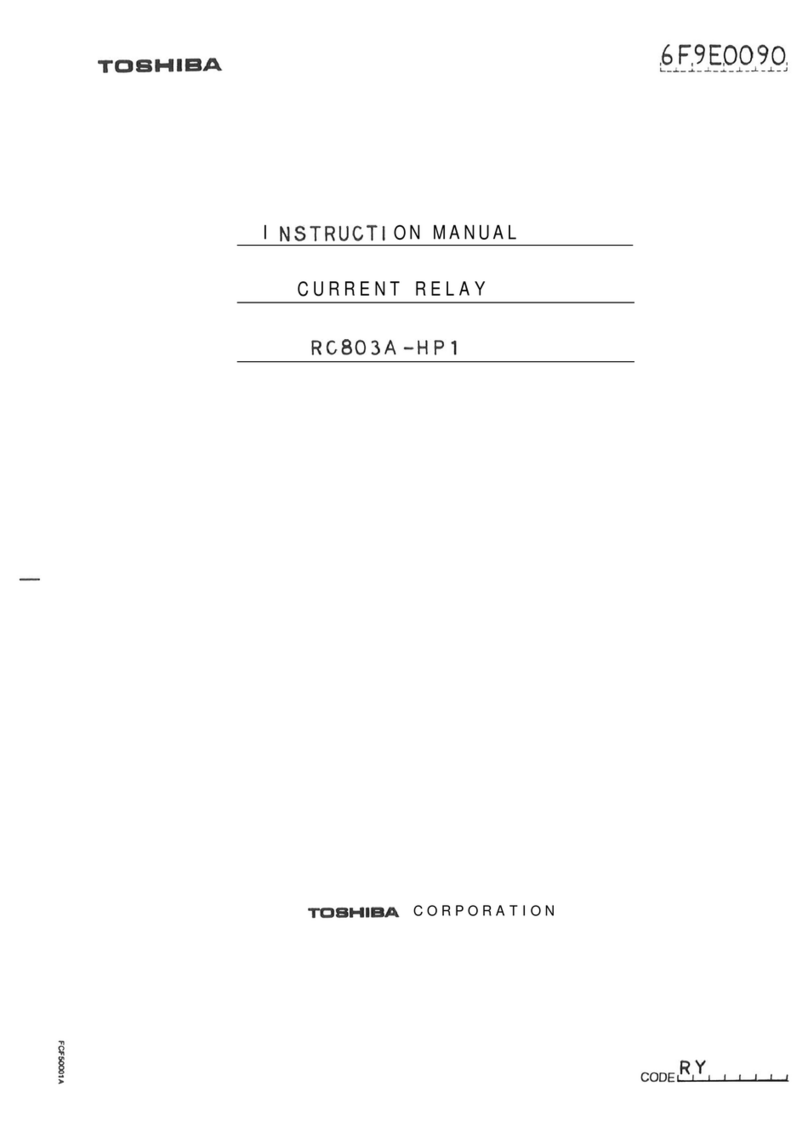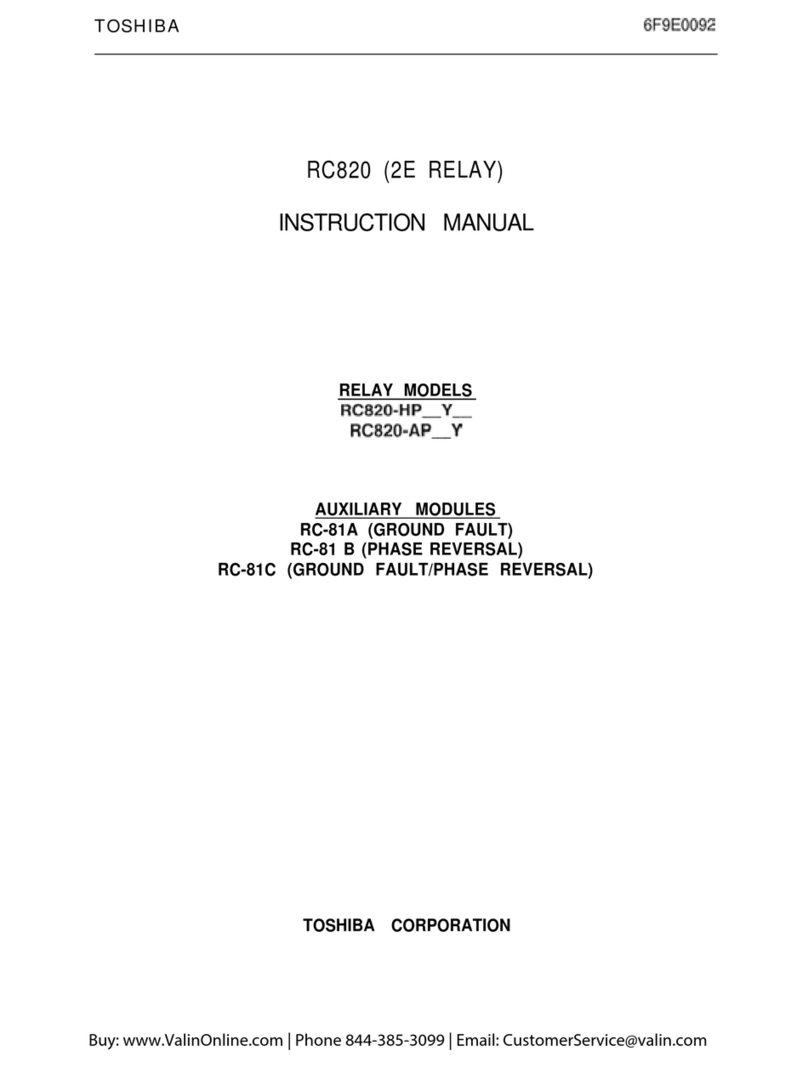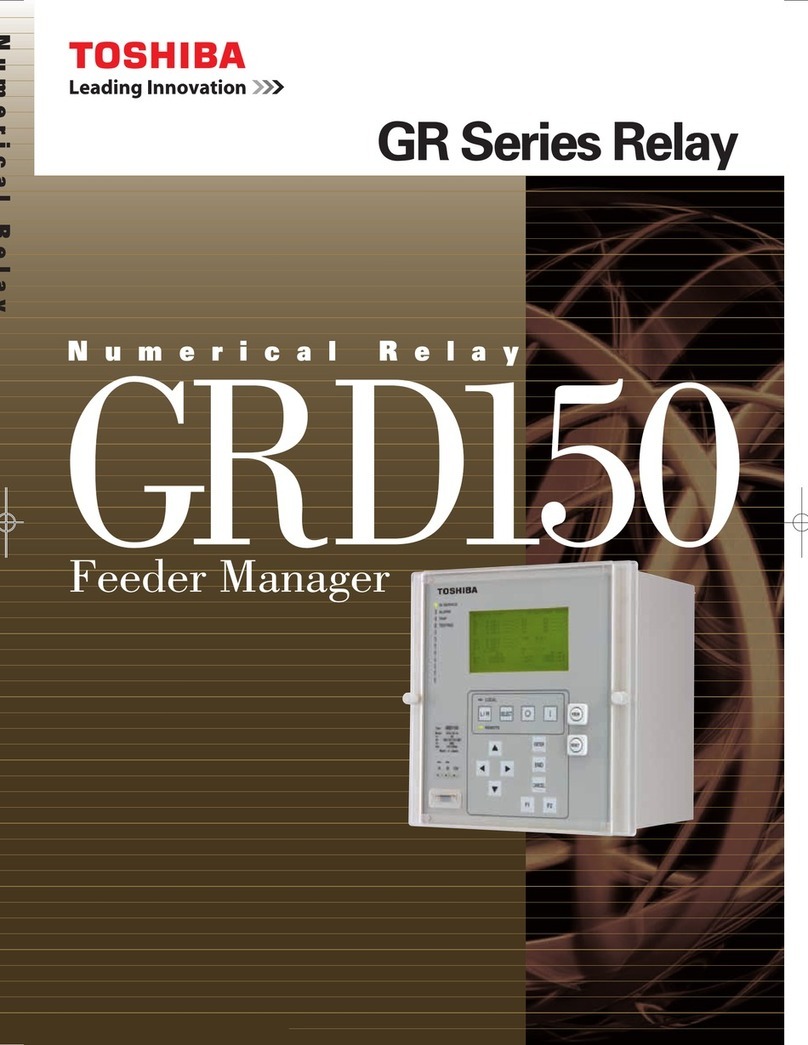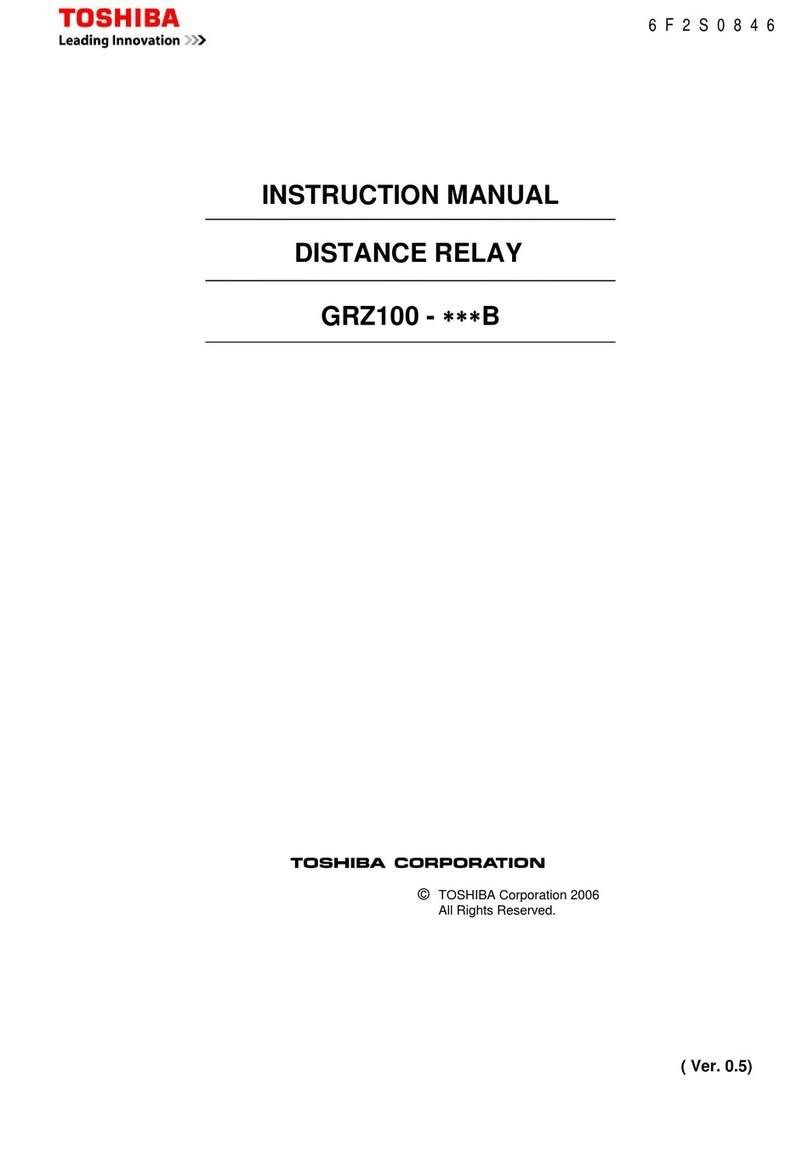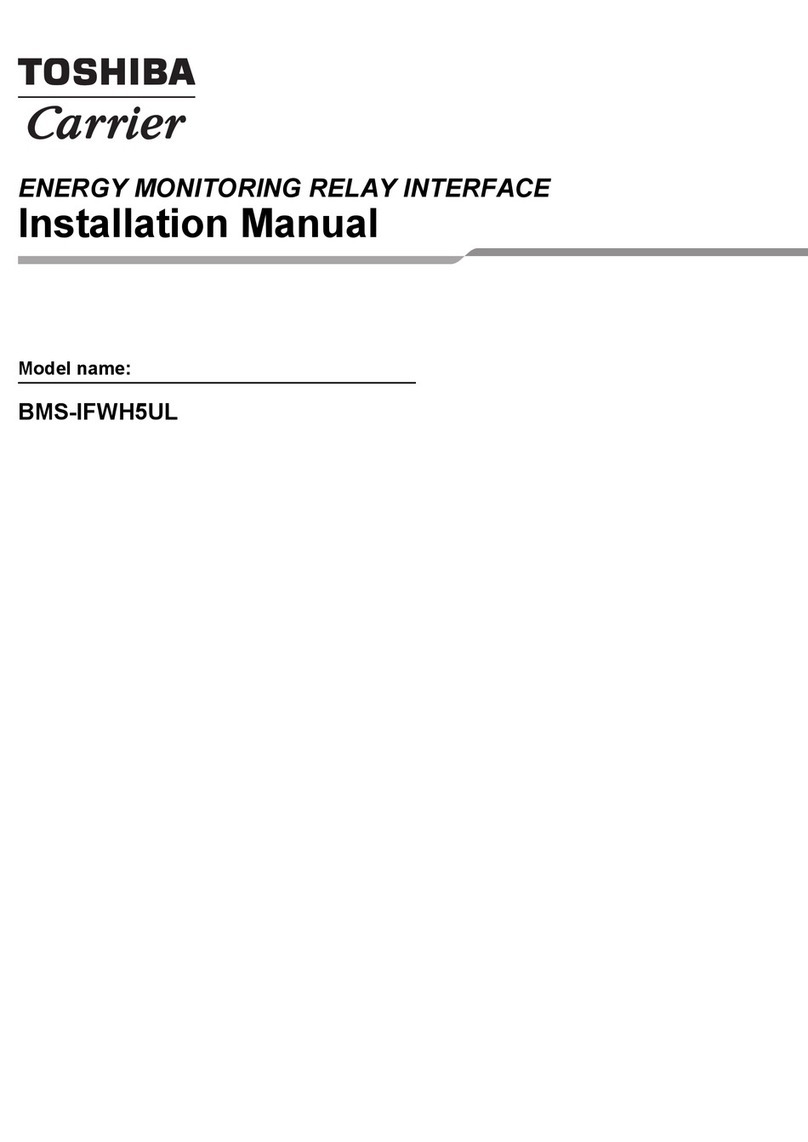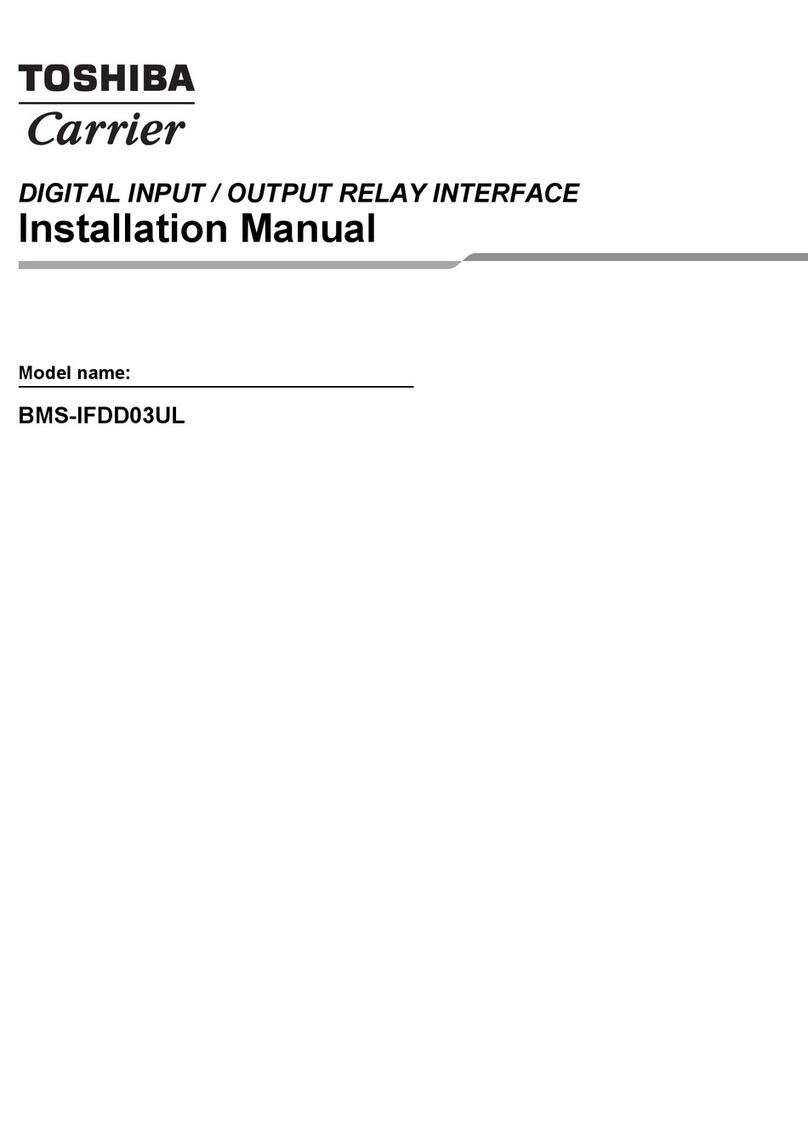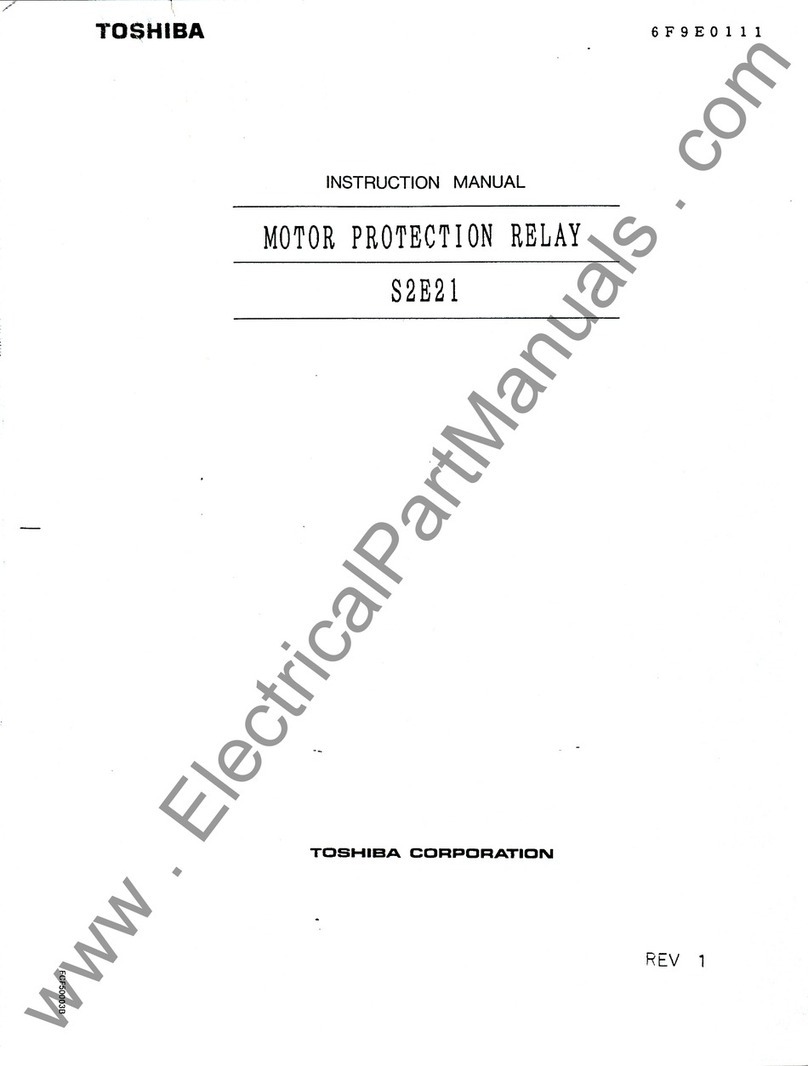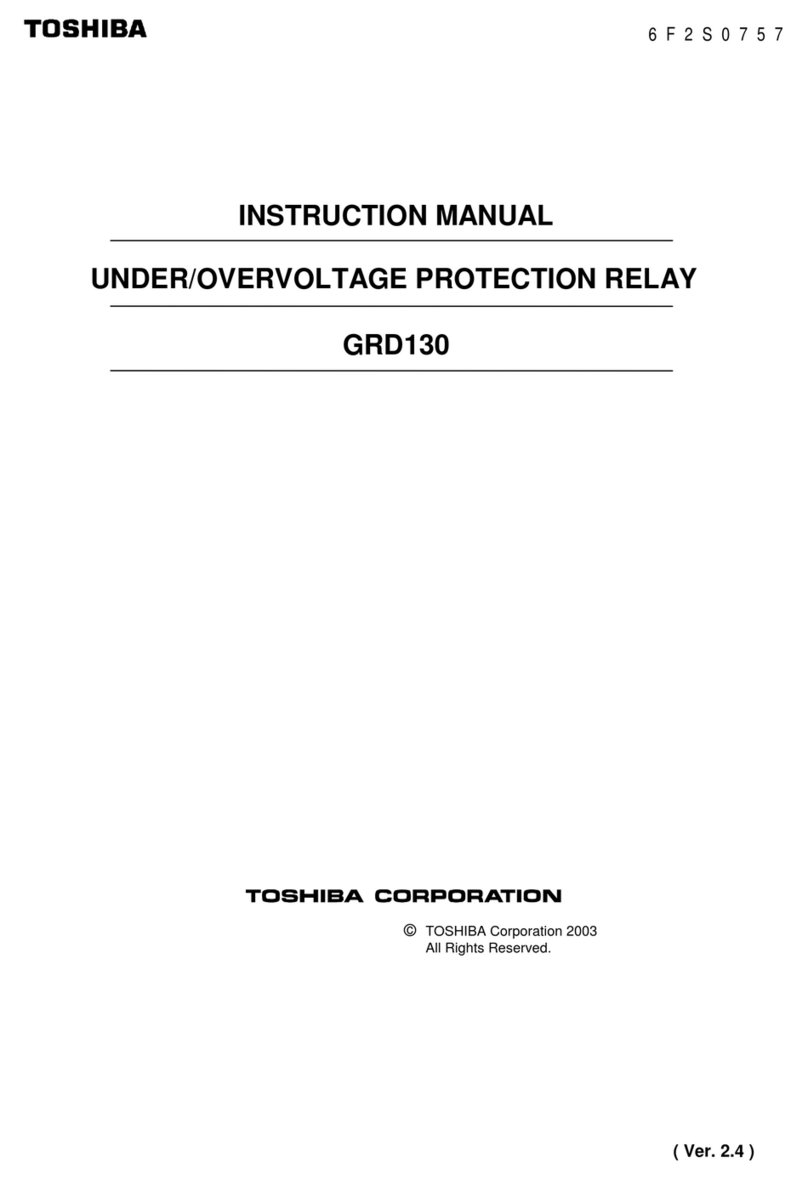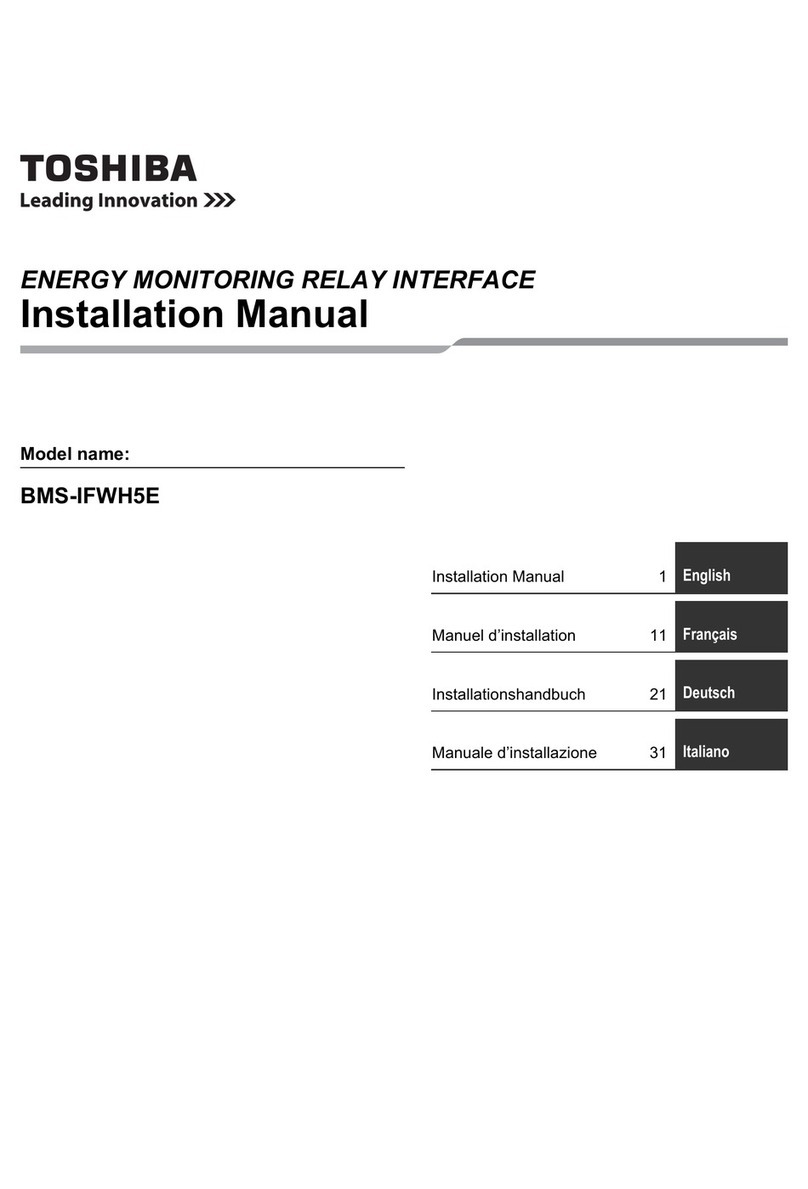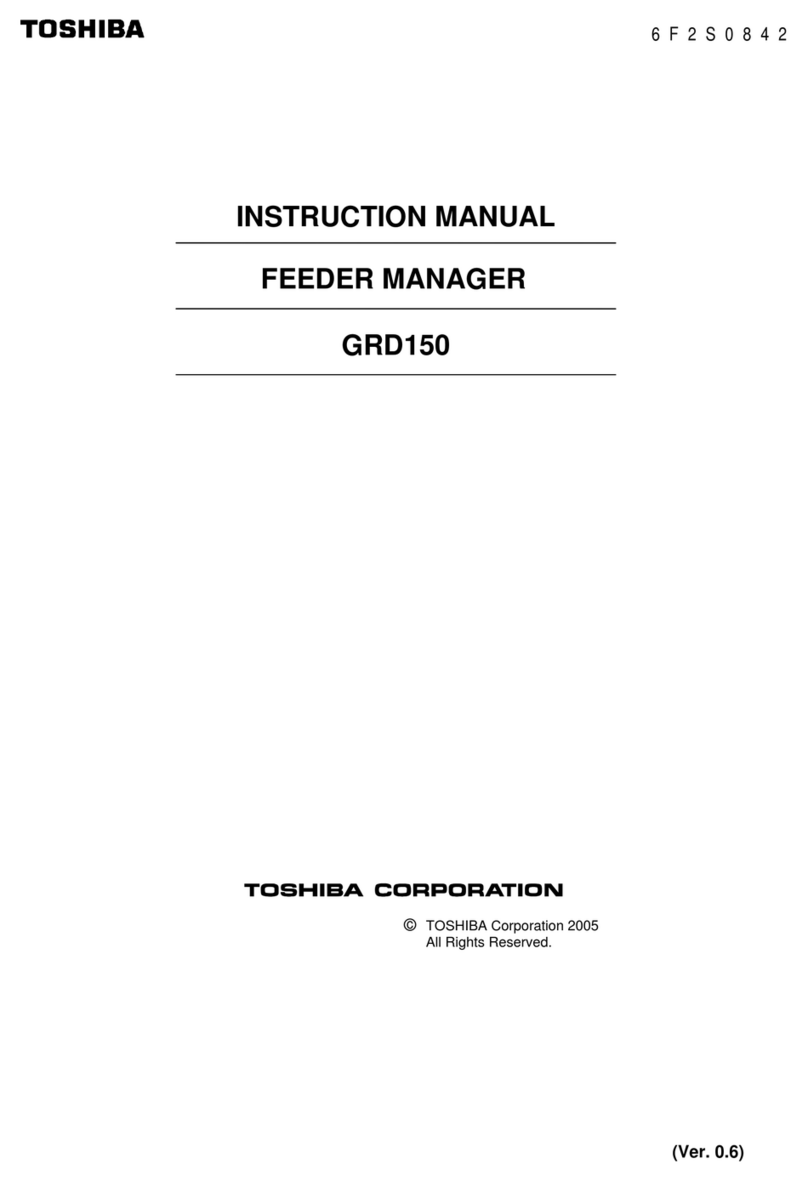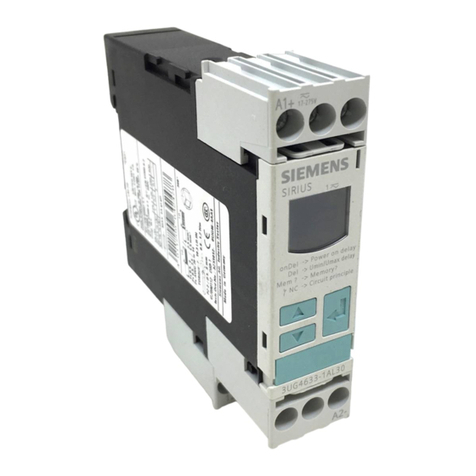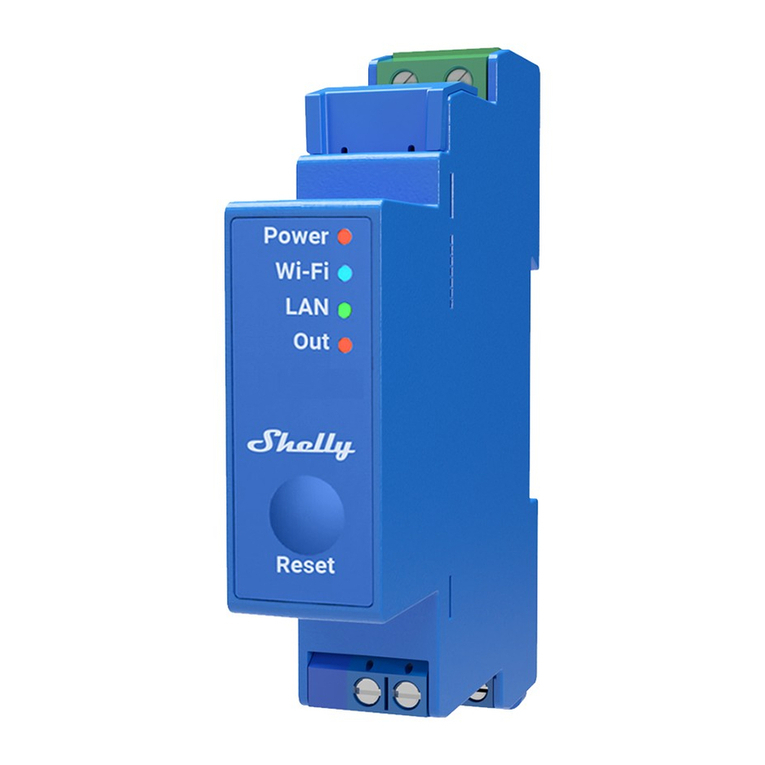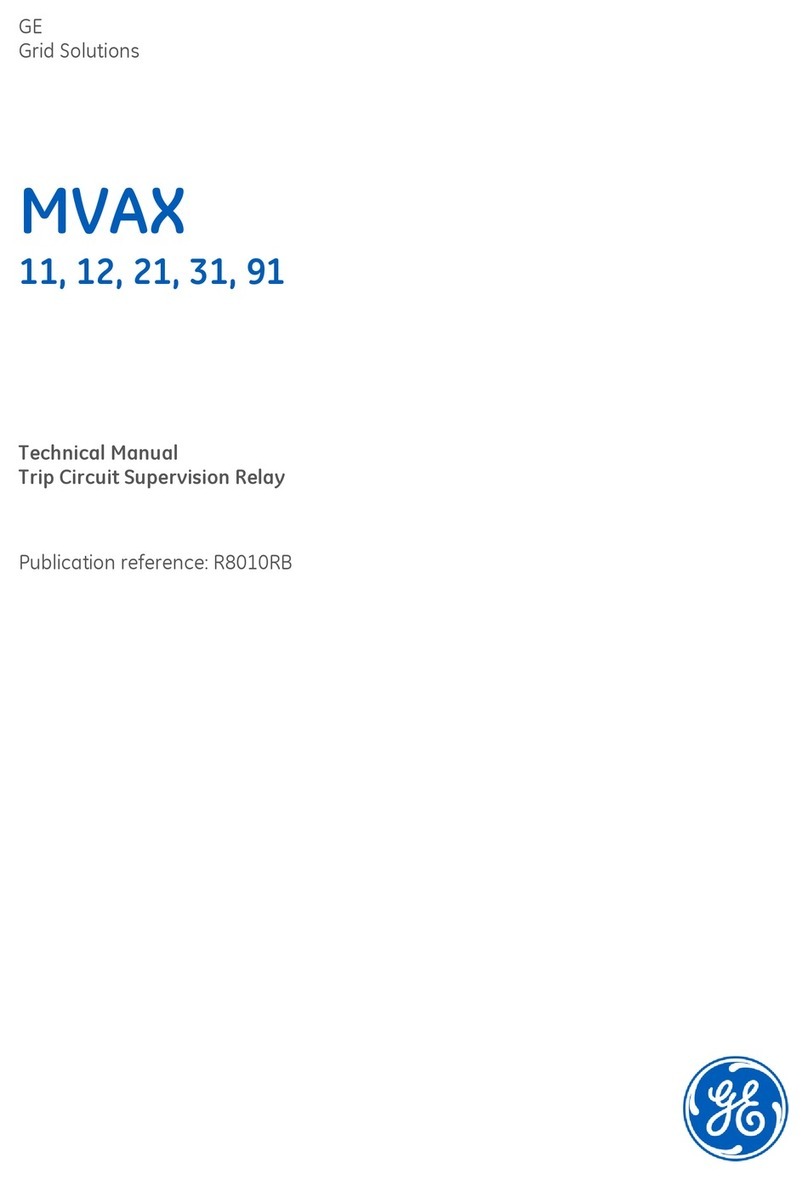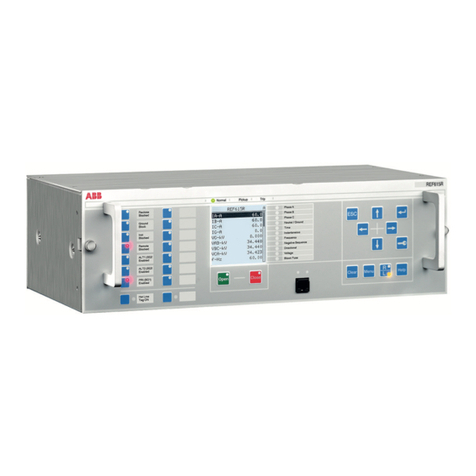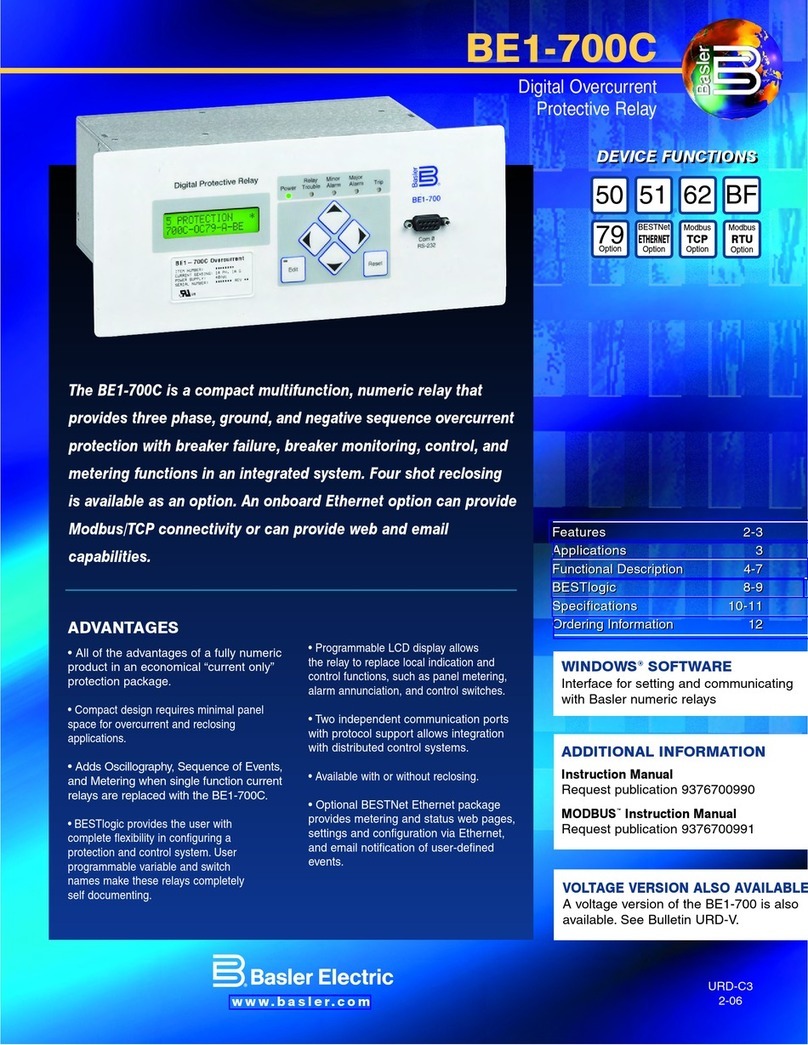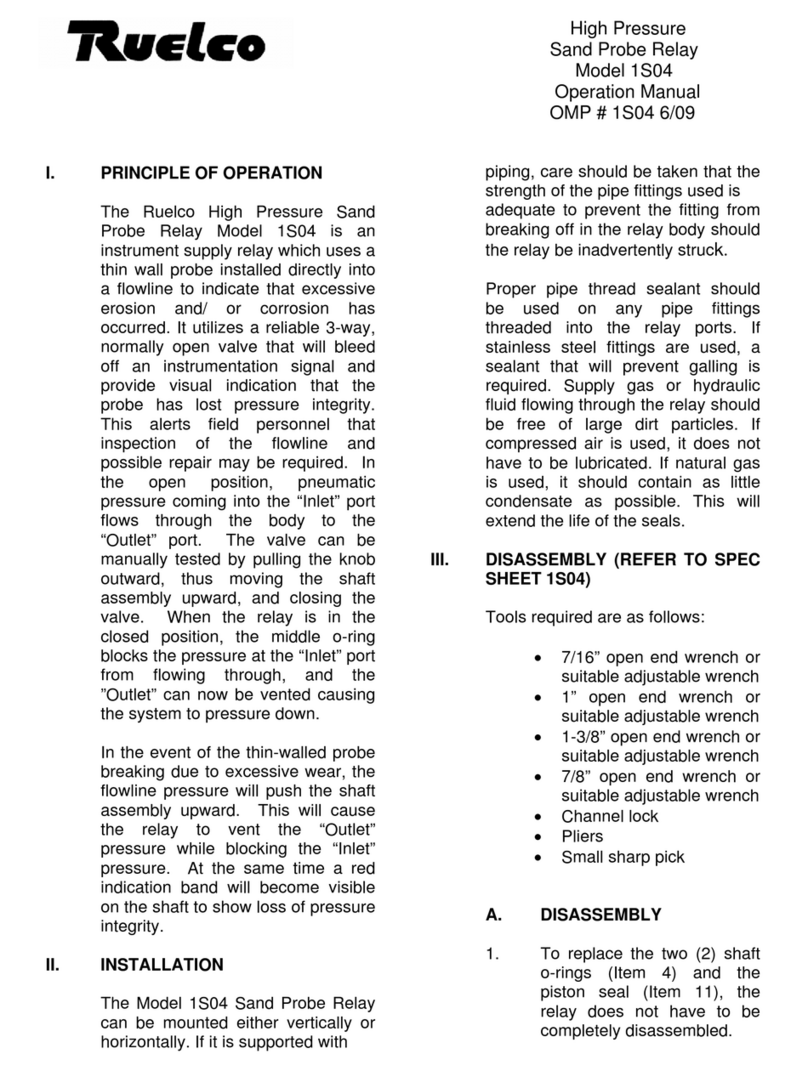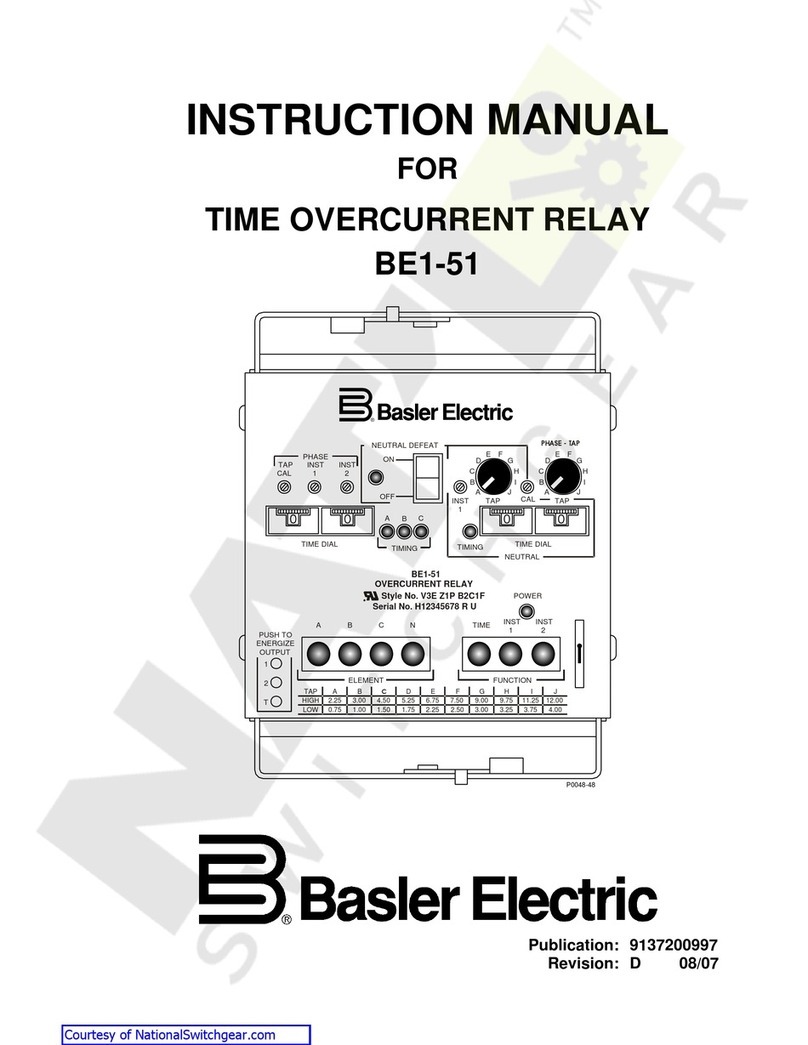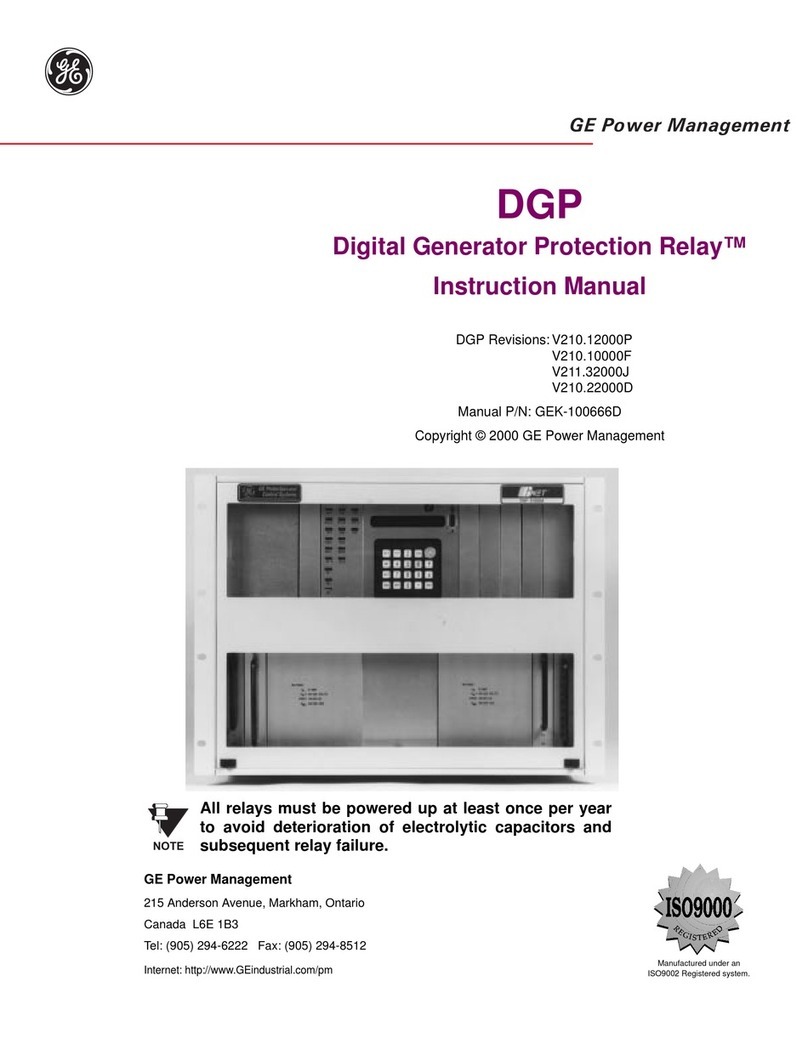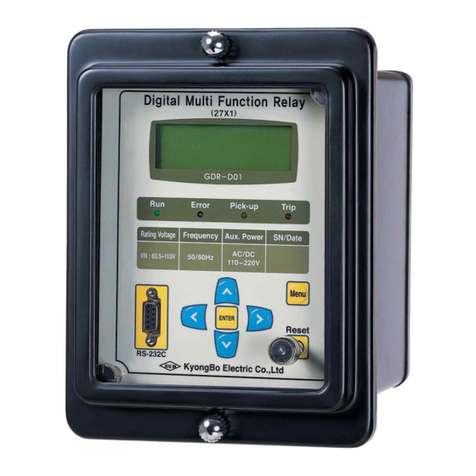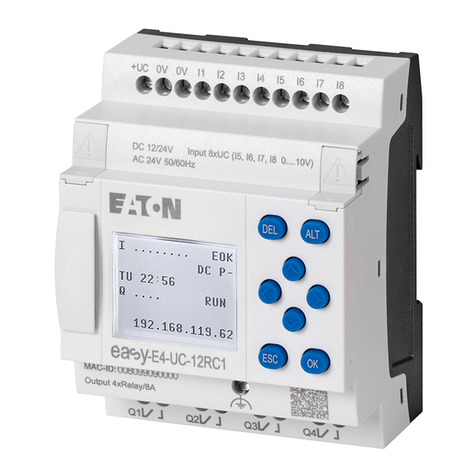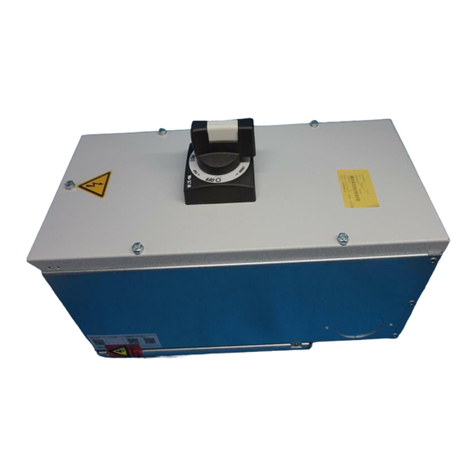
⎯8⎯
6F2S0828
1. Introduction
GRL150 provides fully numerical, multi-function phase-segregated line differential protection for
use with pilot wire or direct fibre optic communication.
GRL150 has two model series which differ according to the communication interface, see Table
1.1.
Table 1.1 – GRL150 Models
Model Configuration
GRL150-100 series
Pilot wire applications
GRL150-400 series
Pilot wire or direct fibre optic applications
Model 100 series is for pilot wire applications. Model 400 series provides both pilot wire and fibre
optic interface and the application of communication is selectable by manual setting.
All models include multiple, high accuracy, phase-segregated protection elements with integrated
overcurrent guard scheme and continuous channel supervision.
Each of the local and remote terminals has a differential calculation function and performs
arithmetical operation independently and simultaneously.
In addition, GRL150 provides back-up overcurrent protection (for phase and/or earth fault) with
inverse time and definite time delay functions and optional sensitive earth fault protection.
All models provide continuous monitoring of internal circuits and of software. External circuits
are also monitored, by trip circuit supervision, CT supervision, and CB condition monitoring
features.
A user-friendly HMI is provided through a backlit LCD, programmable LEDs, keypad and
menu-based operating system. PC access is also provided, either for local connection via a
front-mounted RS232 port, or for remote connection via a rear-mounted RS485 or fibre optic port.
The communication system allows the user to read and modify the relay settings, and to access
data gathered by the relay’s metering and recording functions.
Password protection is provided to change settings. Four active setting groups are provided. This
allows the user to set one group for normal operating conditions while other groups may be set to
cover alternative operating conditions. Any one setting group of four different setting groups can
be selected by PLC (Programmable Logic Control) function.
Data available either via the relay HMI or communications ports includes the following functions.
Metering
Fault recording
Event recording
Disturbance recording
GRL150 provides the IEC60870-5-103 communication protocol for use with substation control
and automation systems.
Table 1.1.2 shows the members of the GRL150 series and identifies the functions to be provided
by each member.
